STEPN is one of the hottest cryptocurrencies at the moment and people are lining up in order to get an activation code that will give them access to the application and thus also access to the platform and its earnings. But, how does STEPN operate? Is this a classical Ponzi scheme? What is a Ponzi scheme? Should you be worried before you invest?
I am a big fan of STEPN myself and last week I went to this gathering for men. What do you think we spoke about? All sorts of stuff, but of course, I had to mention STEPN in one of my conversations. The people sat with eyes wide open and they just liked the idea of getting paid to earn. But, then one of my great friends asked me a question that is a tough one… how does STEPN make money? What is the business idea? Is this an idea and a project that can only stay alive as long as new investors spend money, and the moment the new investors stop coming, the project will drop in value and die quickly?
This made me think and based on those questions, I have written this article. I am not at all affiliated with STEPN, and whatever I write here is my own thoughts (unless I say otherwise). Please feel free to agree or disagree, and I would love to hear serious comments as well in the comments field.
Before you move on, take a look at the following two articles written by STEPN dealing with the Ponzi accusations.
– Are all play-to-earn platforms Ponzis?
– STEPN tokenomics
If you want to learn more about how you can get started with STEPN, take a look at our STEPN beginners guide.
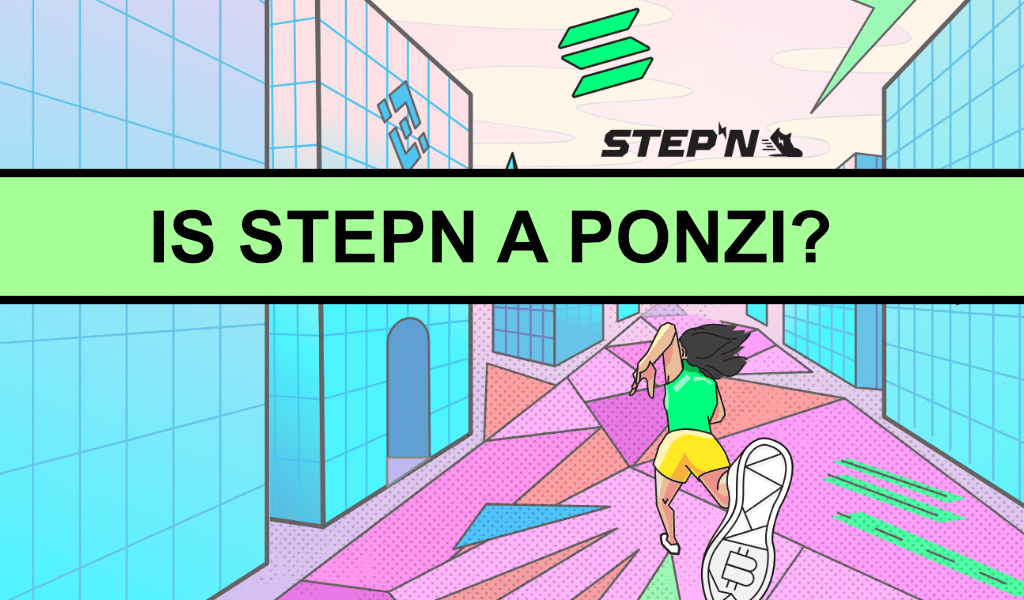
What is a Ponzi?
This is a common question and I will just give you a short answer here. The concept originates from an Italian man named Charles Ponzi who sold so-called Postal Reply Coupons at a discount in Italy and sold them for a higher price in the USA. The profits were distributed between those who invested. The only problem was that there never existed discounted Postal Reply Coupons. In other words, he could distribute profits to the investors as long as there were new investors adding money to the project which made him able to pay the early investors.
In other words, there was no real product, and the money from new investors was used to pay early investors. The moment the number of new investors decreases, the project will fall apart. Such a project can also fall apart in the moment investigations are made, thus revealing the truth about the project at hand.
That is a Ponzi… but let us return to STEPN. Is STEPN a Ponzi?
Is STEPN a Ponzi?
Here I will just deal with a couple of topics that might help us get an answer to the question at hand.
The team and partnerships
I believe it is important to understand that STEPN wasn’t born under a rock. In fact, STEPN was embraced by the biggest cryptocurrency exchange of them all, Binance. This is where they launched the GMT token and they are now running the project both on the Binance Smart Chain and on Solana. The partnership with Binance is actually something that could give some additional trust to the project.
STEPN also has a visible leadership of real people (they are not hiding their identities). This is once again something that can be considered a positive thing.
STEPN has a partnership with ASICS for sneakers on the Binance Smart Chain. Asics is a giant in the real world when it comes to sports equipment and shoes, meaning that this is once again something that at least I consider to be a very positive thing for STEPN.
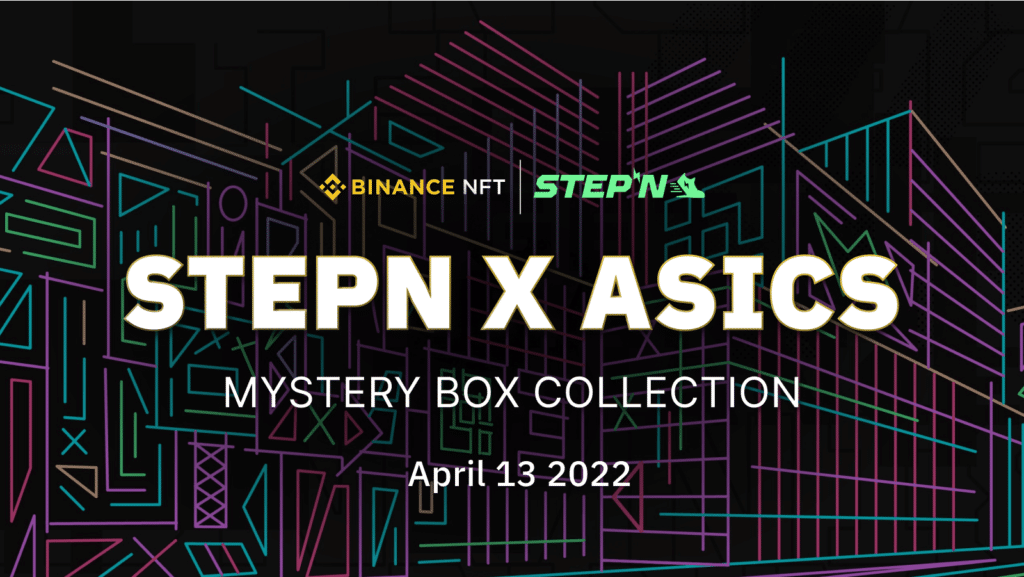
The business model – actual earnings and future opportunities
But, is STEPN only relying on new investors to show up in order to survive? Do they have any other sources of income?
I have got to admit that it would be great to get some more clarity on these questions. I do not have a really good answer to these questions, but I do have some thoughts that might help both you and me.
STEPN earns a lot in royalty fees as people sell sneakers and gems at the marketplace
When someone sells a sneaker, STEPN receives royalties (in SOL tokens) with each sale. Let us imagine a daily sales number of 5000 sneakers at an average price of 15 SOL. That is a total of 75,000 SOL in sale transactions per day. 4% of these transactions are royalty fees, meaning 3000 SOL is paid to STEPN daily in royalty fees. If we imagine SOL at a price of $100, that is $300,000 in daily royalty fees coming to STEPN.
This is not just based on new users, but there are lots of users on the platform that decide to buy more sneakers later and to buy a better main sneaker.
It is also important that there are royalty costs when selling gems, thus creating more income for the STEPN teams.
It is obvious that the biggest percentage of sneaker sales comes from somewhat new users who want to grow their daily income and upgrade their shoes, but one shouldn’t believe that this is about newcomers only.
Millions of people running each day with an application – that is power!
STEPN doesn’t make money based on this at the moment, meaning that the argument isn’t really good (at the moment). But, I remember using the application Runtastic some years ago for running. One day I woke up and it wasn’t called Runtastic anymore. Do you know what it was called? It was called Adidas Running. Do you know why? Having an application that is used by millions who move on a daily basis gives power to the owners. This is an application with potential and it for sure has value to advertisers and those interested in reaching people who love walking and running outdoor. Do not forget, even though you use an NFT sneaker to use STEPN, you need to have an actual shoe as well while walking… There is giant potential here! What if Asics would give new shoe owners some special code that would give them a discount when buying an NFT sneaker for STEPN?
Once again, this is just dreaming and portraying a future potential of the platform… But it for sure is a valuable platform and if the marketing crew and the management of STEPN have some experience and skills in this area, this is a platform worth millions of dollars already.
STEPN already has a partnership with Asics when it comes to STEPN sneakers on Binance Smart Chain. Whether or not they paid to be a part of this or the details of this still remain unknown to me, but I will try to find out more about it.
It should also be mentioned that it is in the interest of the health government in all countries of the world to support applications such as STEPN. Investing in the health of the citizens is often much cheaper than paying for their health bills. Of course, this is also an imaginary thought, but it has the chance to bring value to the protocol in the future,
If they manage to keep the GST and GMT value at a good level, that will generate income in itself
It is easy to understand that the STEPN team has lots of GMT and GST tokens at their disposal. Now, if they manage to keep the project up and going, they can easily sell off some tokens on a regular basis to generate the needed profit to pay workers, developers, and the rest of the team.
This leads to the question of tokenomics that are extremely important. What can STEPN do in order to make this more than a project in which people earn GST and dump their tokens at once for profit? This is probably the greatest challenge of them all.
- What can STEPN do to make sure that there will not be gigantic inflation of GST tokens that will cause the token price to dump?
- What are they doing to make sure that there will be a constant flow of new users coming to the platform, keeping the buying pressure for both sneakers and tokens high?
STEPN has clearly been inspired by, for example, Runescape. This is a game that has been played by more than 100,000,000 people. But, less than 10,000 people had reached the “best” level in 2020. What does this mean? People had a reason to keep playing the game for years, simply because there were always new things worth discovering and new functions worth trying, and levels worth reaching.
STEPN constantly tries to make you want to spend your earnings on the platform. First of all, you always repair your shoes after running, instantly burning maybe 5%-10% of your earnings. Then you want to level up your sneaker in order to increase your earnings. Then you want to mint new sneakers. Then you want to get even more sneakers. Then you want to open mystery boxes, and maybe you feel in hurry, meaning that you pay extra to get it even faster? Then you want to enable a comfort socket for your sneaker. And then there are lots of other functions coming in the future in order to give you all the more reasons to spend your GST and GMT tokens on the platform. All such actions will cause the token supply to decrease, which again will help stabilize the price of the token.
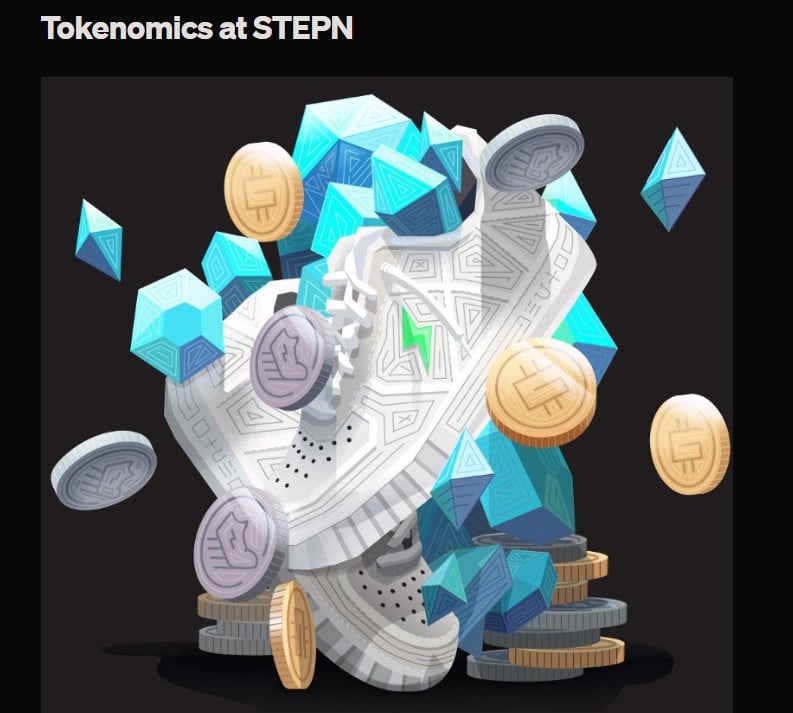
Besides this, STEPN has also introduced a “floating” system when it comes to the price of minting new sneakers. This will once again help keep the price of GST (and GMT) stable. You can read more about the STEPN minting prices right here.
In other words, this is where the real challenge of the project lies. Will they manage to make sure that even early investors who have reached level 9, level 19, or level 29, who have epic sneakers, 4 gems, and all sorts of extras, and who make 100s of GST tokens per day, stay on the platform and still spend their earnings there without dumping them all?
STEPN has taken measures to make sure that new users are onboarded regularly. They have the daily activation codes which are there to make sure that the price is kept at a certain level as new users come steadily every day. This is to avoid extreme FOMO and hype as everyone joins the platform and buys at the same time, only to see a dump come along a few days later. This sounds like a wise decision, even though the people suffering from a valid activation code might feel otherwise.
In other words, the biggest challenge might be in creating tokenomics that will fight inflation and that will inspire users to spend their earnings on the platform instead of just selling the tokens for profit at once. The STEPN team is clearly working on this continuously.
Some final words about STEPN and whether it is a Ponzi
To be honest, I do not consider STEPN to be a Ponzi at all. But, I do realize that the play-to-earn and the move-to-earn industry is a platform type that is very hard to conquer. How can you keep a platform alive and stable for years, also if the interest in the platform should decrease and cause a big drop in the number of new users coming to the platform? STEPN is 100% aware of this and that is also why they have produced several articles on the topic themselves.
I do believe the potential of an application like STEPN is gigantic and there are for sure revenue opportunities for STEPN by partnering with larger companies such as Asics, Nike, Adidas, and also companies dealing with health supplements for runners and more.
Of course, the current payouts are very high, and it feels unrealistic that you can earn $20 walking 10 minutes per day, even if the initial investment is high. To be honest, the price of GST and GMT could drop 10x, and it would still be an awesome platform worth using. If I currently earn $200 per day running with nine sneakers, I would still love to do the same if I only earned $20 per day. It might be that lowering the payouts by decreasing the GSTs earned per energy (or by seeing a dump in the price of GST) would actually help the platform remain more sustainable.
All in all, STEPN is a platform in need of new investors to keep the rewards at its current level. However, they are pioneering a way to solve this through wisdom and hard work when it comes to tokenomics. And once again, if they manage to keep the platform sustainable, they will have a constant source of income themselves through all the tokens they own themselves and through constant royalty fees earned as people sell sneakers, gems, badges, and other stuff on the marketplace. It is also important to see that these fees are earned in SOL, meaning that they will not dump GST or GMT on the market through the royalty fees, but they could potentially even use the earnings for buybacks.
What do you think? Are you bullish or bearish about the future of STEPN? Do you think they will be able to pioneer forth a move-to-earn concept that remains sustainable for years and years? Or will this become like many node projects that had a fantastic upwards curve in the first months, and then just slowly/quickly decrease in value as the new investors stop coming and the old investors simply dump their earnings on the market in order to take profit?
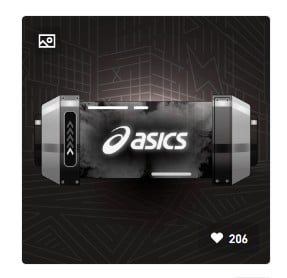
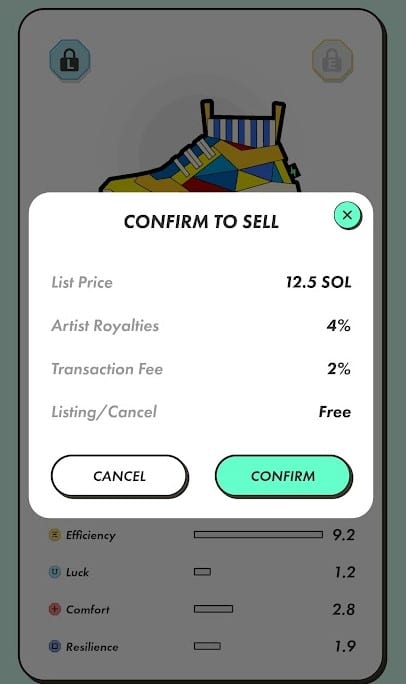
What a very inconsistent author, ey?
Your reply doesn’t have anything to do with the comment.
In the article, you wrote too many so-called “analogy” to defend a very obvious ponzi scheme.
Then a single comment explains why StepN is a ponzi scheme and you replied with “one armed bandit machine”?? Hence, subconsciously saying that this stepn thing is in fact, a ponzi scheme.
Hello there 🙂
I know I didn’t really reply to the commenter. First of all, I don’t consider it my task to protect and defend STEPN. I clearly see the weaknesses of the system myself, and I have mentioned several of those in the article as well. I do, however, give the team the benefit of the doubt, seeing that they work really hard on the application and the protocol. With the recent introduction of their own DEX it is already the most used DEX on Solana, and I believe that they will be able to maneuver the project in a healthy direction, and more and more away from the so-called ponzinomics.
Once again, if you consider it to be a Ponzi, leave it, sell all sneakers (if you have any) and forget about the project. I will not blame you!
There’s no debate or opinion on this. It is 100% a ponzi scheme. It’s an interesting and elaborate ponzi scheme that may end up with a strong fan and user base and run a while but it is still 100% a ponzi scheme. It is possible to transform it so that it isn’t a ponzi scheme, but that would probably involve part of what you said in the article of getting significant advertising revenue, in addition to reducing or eliminating the need to charge the users as much as they do. Even knowing it’s a ponzi scheme, I am really intrigued by the concept, and am very tempted to try it out.
STEPN is not providing an actual tangible service or product that people would pay for if there was no “paid to walk/run” promise. They are not providing a real asset to invest in, at least not in the conventional sense. There is no divisible separation between customers, users, and investors. You are defacto all 3 whether you like it or not.
Even though they obviously are trying to maximize the ways that you pay money back into the system, it still comes down to 3 current scenarios. 1. Either the walkers/runners are paying more into the system then they are getting back for walking/running, and if that’s the case then the users have been misled and kind of ripped off. 2. or STEPN is paying out more money to walkers/runners than they are generating for themselves which is an unsustainable business model that could very likely lead to collapse. 3. Or they’re completely relying on getting enough new users to make sure there is new money to give existing users to keep the system afloat.
Even if the main goal all along was to create a large enough audience or network so that large advertisers that wanted to target walkers/runners would buy ads, then why convolute everything with all the NFT and crypto stuff?
If they wanted it to be less of a ponzi scheme, they should require that to use the app you have no choice but to watch a certain amount of ads per day as well as have affiliate links where STEPN would get affiliate commissions if users took advantage of ad links to buy real products and services from 3rd party companies.
The only other way it wouldn’t be a ponzi scheme other than getting advertisers would be if phone technology was at the point where the user bases phones were passively mining crypto for STEPN.
Just a quick thought… I would often compare STEPN to a One-Armed Bandit machine. What do I mean? People spend way more than they win, but it still gives a feeling of satisfaction! I know this doesn’t mean that it isn’t a Ponzi, but people put in a dime and when they win half a dime, they are happy. If they should win 20x more, they will in most cases return and spend all their gains at trying to earn more, but in the end, they still spend more than they earn.
This doesn’t explain or say that it isn’t a Ponzi, but it is just a different way to think about it as well!